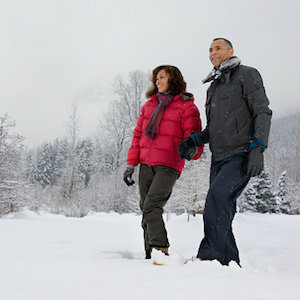Perhaps you love swimming outdoors in the summer or going on walks through the park in the fall, when autumn leaves create brilliant scenery. But then winter arrives, and it’s more challenging to exercise outdoors because of the cold, it may be slippery outside and because darkness falls so much sooner. Yet you want to stay active to help remain independent and healthy.
So what do you do? How do you create a winter exercise routine?
First, of course, you can move your exercising indoors, perhaps in a gym or senior center — or even by using exercise videos at home. That way, you’ll be in a well-lit, climate-controlled environment without the risk of slipping on ice or snow. If that’s what you choose, that’s perfectly fine. But if you find yourself missing outdoor exercise, there are actually benefits in making that work.
A New York Times article shows numerous benefits to outdoor exercise, including:
- You stride differently and flex your ankles more outdoors.
- You tend to exert more energy when walking outdoors as compared to treadmill use, perhaps because changes in wind and terrain can’t be duplicated effectively indoors.
- People who walk outside scored more highly in a small study for “vitality, enthusiasm, pleasure and self-esteem and lower on tension, depression and fatigue.”
- In a larger study of older adults, those who exercise outdoors do so longer and more often.
- Direct sunlight may play a role, lowering blood levels of cortisol, a hormone connected to stress.
Safety Tips for Outdoor Exercise
If it’s already cold out, you can be vulnerable to hypothermia, a dangerous body temperature drop. If the weather is — or is predicted to soon become — very windy or cold, make that an indoor-exercise day. Also make that decision if it is slippery outside (which can happen as temperatures are warming up and melting snow).
If you are exercising outdoors, warm up muscles first by walking indoors. Dress in multiple layers of loose clothing; tight clothing can prevent effective blood flow and, therefore, contribute to loss of body heat, whereas loose clothing traps warm air between layers. Also wear a hat, scarf and gloves.
Also monitor for signs of hypothermia: “cold feet and hands, swollen face, pale skin, shivering, slurring words, acting sleepy and being confused or angry.” Consider having a walking partner and agree to watch for signs of hypothermia in each other. Call 911 if you believe someone — including yourself — may have hypothermia. Older adults lose body heat more quickly and, if the core body temperature goes below 95 degrees, this can lead to serious health issues. Find more information at the National Institute of Aging.
What if You’re Sedentary?
The good news, according to experts, is that it’s not too late to start exercising. And if the idea of exercise sounds intimidating, focus on activity. This can include a walk in the park, flexing your muscles and so forth. Talk to your doctor before beginning and know that it’s fine to start slowly. That may in fact be what your doctor advises.
Experts suggest starting out with smaller, achievable goals and studies have shown that every little bit of exercise helps. This includes building a snowperson with your grandchildren!














